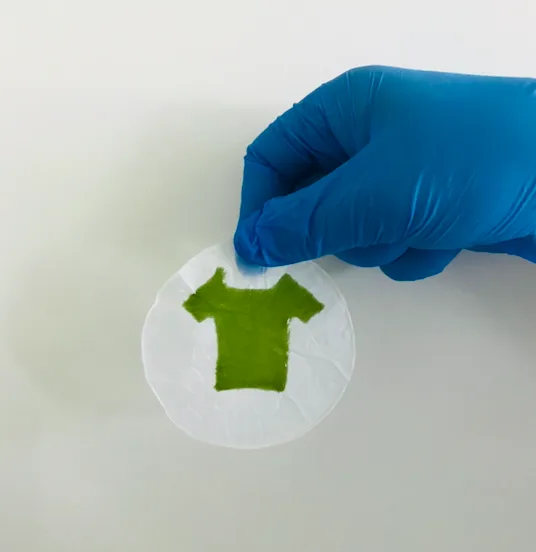
Clothes made from algae give a glimpse into the future of fashion
Bioprinted photosynthetic materials could make waves in the fashion and biomedical industries in the coming decades, researchers say.
Clothing made from algae adds to the growing list of innovative items that scientists are creating with 3D printers.
A team of international researchers from the University of Rochester and Delft University of Technology are using a novel bioprinting technique that turns algae into a versatile living material. Their study, published in Advanced Functional Materials, says the material has an extensive number of applications in the energy, medical, and fashion industries.
“Living materials, which are made by housing biological cells within a nonliving matrix, have gained popularity in recent years as scientists recognize that often the most robust materials are those that mimic nature,” the researchers say in a press release.
The biomaterial is made from microalgae and bacterial cellulose, which is a flexible and strong nonliving component produced by bacteria and is commonly used in many sectors to make products like food packaging materials, textiles, and wound dressings for patients.

Photos of the living algae material. (University of Rochester/Srikkanth Balasubramanian)
The researchers created this first-of-its-kind living material by using 3D printers to apply microalgae to the bacteria cellulose, similar to how regular printers apply ink to paper. This method creates a photosynthetic material that can be easily regenerated due to the rapid speed that microalgae grows at. Some of the material’s novel functionalities include the ability to detoxify harmful compounds and self-healing capacities.
“These bioprinted microalgal structures are resilient to physical distortions and to immersion in water, indicating their physically stable nature. The bioprinted microalgal cells exhibit high viability over a period of at least 1 month,” the study says.
In addition to biomaterial being sturdy and tough, it captures carbon dioxide and produces oxygen just like plants in the soil do. The researchers say that their material can be used in medical applications, wearable devices, adhesive labels, curtains, and artificial leaves that produce sustainable energy. One bioprinter costs just $250 USD, which the researchers say is a cost-effective option that can be easily scaled.
The environmental costs of fast fashion and many other parts of this industry are staggering. Accurate statistics about the fashion industry’s environmental impact are hard to find, partly due to a lack of peer reviewed research and challenges with reliable data collection, but nevertheless, the waste and greenhouse gas emissions from millions and millions of garments produced and disposed of each year add up.
“Bio-garments made from algae would address some of the negative environmental effects of the current textile industry in that they would be high-quality fabrics that would be sustainability produced and completely biodegradable. They would also work to purify the air by removing carbon dioxide through photosynthesis and would not need to be washed as often as conventional garments, reducing water usage,” the press release states.
Thumbnail credit: University of Rochester/Srikkanth Balasubramanian











